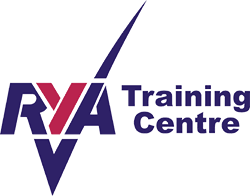Certification:
- RYA Day Skipper Theory Certificate
A sector light.
- Online E-Learning program with immediate access.
- Interactive demonstrations, simulators and examples.
- Interactive online chartplotting and tidal curve tools with immediate feedback.
- 40 hours of study plus Exercises and Exams.
- 2 separate online exams.
- No prior experience required.
- RYA Day Skipper Course Pack sent direct to you.
- Includes Commercial Grade Plotter & Dividers.
- Southern Hemisphere Syllabus
- 6 Months course access with extension options.
- Bespoke, practical supplementary course material for Australia and South Pacific Weather Patterns.

Who is this course for?
This course is designed for skippers of both power and sailing craft and it will give you the knowledge to handle short passages by day. The course covers all the shorebased theory required for the RYA Day Skipper Practical course.
The NAVatHOME Australia RYA DaySkipper theory course is one of Australia's best online sailing and motoring courses. The RYA DaySkipper program is the cornerstone of the RYA Cruising Yachtmaster scheme with a strong baseline in knowledge and skills that you can use anywhere.
- Skippers looking to understand navigation best practices for waters they are familiar with.
- People planning to charter a yacht in Europe, Asia or the Caribbean.
- Skippers wanting to understand navigation fundamentals.
- Skippers looking to start the RYA yachtmaster pathway.
- Those who adventure on day passages that have some navigational challenges.
- Those just starting on overnight local trips.
Course Pre-Requisites:
This level course does require some degree of boating knowledge to start. Ideally you would have spent some time on the water crewing for someone, or even skippering your own boat to get to know the basics of what the various parts of the boat are.
The following skills are ideally recommended for those interested in the Day Skipper Program but are not essential. If you want to, you can jump straight into Day Skipper.
- Basic Boating Experience - Ideally with initial attempts to navigate.
- Basic addition and subtraction maths.
What the course covers:
- General Seamanship.
- Parts of the boat.
- Securing the boat on the dock.
- Preparation for Sea.
- Sailing Knots.
- Anchoring Techniques.
- Basic Sailing Concepts including:
- setting sails
- how a yacht actually moves into the wind
- manouvers
- steering and maintaining a heading with the wind
hide
Navigation is not just following a GPS. It includes skills to verify your position, estimated and dead reconing positons when you can not see land. GPS is a great aid, but without the fundamental skills of navigation, you will never get the most from it.
- Identification of fixed, visual, aids to navigation.
- Developing a three position fix using landmarks, navigation aids, a compass, and a chart.
- Understanding reasonable error in creating a fix.
- Usage of paper and electronic charts.
- Official and un-official charts.
- Depth contours, fixed navigational aids, three point fixes.
- Compensating for tide when determining a course to steer.
- Dead Reckoning Positioning based on speed, direction and time.
- Determining Estimated Position from Leeway, Tidal streams and Current.
- Verification of Position.
- Basics of Integrating Practical Navigation with Electronic Navigation Aids.
- Interactive plotting on online charts with interactive feedback and demonstration of impact of errors in your working.
hide
Nothing has changed navigation like the advent of satellite navigation systems, and affordable radar. But our over reliance on them mean we have lost awareness of the shortfalls and vulnerabilities of this technology. Your electrical system could fail, GPS signals could be compromised, or you may just make a simple error and not realise it.
- Understanding the fundamentals of the different satelite navigation systems.
- Understanding the limits of satellite navigation systems and how to compensate for them.
- Passage Planning with electronic navigation systems.
- Understanding how ALL your navigation and weather instruments play a part in modern navigation.
- Electronic instrumentation and electronic navigation systems.
hide
The impact of Tidal movements are more than just the rise and fall of sea level
- Understanding the causes of tidal movements.
- Understanding why there can be dramatic differences in tidal behaviour in geographically similar locations.
- Compensating for tidal changes for anchoring and mooring.
- Recognising the different methods to find information about tidal movements.
- Understanding Tidal Streams and there effect on navigation.
- Calculating secondary port data from a primary port.
- Predicting the impact of tidal streams on your journey and how to compensate for them.
- Compensating for the impact of tidal streams on your journey using manual methods in case of electronics failure.
- Online graphical tidal calculation tools with interactive feedback.
hide
- Triggers for different weather systems.
- Understanding current weather and predictive weather forecasts, and the impact on your journey.
- Interpreting synoptic charts
- Correlating your observations with the expected behaviour from the forecast.
- Analysing onboard instrumentation such as wind and barometric pressure to compare observations with predicted behaviour and monitoring anticipated progression.
- Local weather patterns
- Geographically specific weather patterns
hide
Did you know that SOLAS requirements now mandate that any vessel heading to open water must have a passage plan? What is a passage plan>
- Introduction to passage planning with waypoints and visual aids..
- Understanding the effects of tide and current on all passages.
- Identification of Port Entry Requirements, and recommended approach methods.
- Interpreting the impacts of weather and tide on your planned trip.
- Identification of Hazards.
- Ports of Refuge.
- Crew management and Safety
hide
- Recognition and Identification
- Determination of purpose
- Lighting, shapes and colour schemes.
- IALA-A and IALA-B schemes.
- Identification on a chart and GPS plotter.
hide
Did you know that any indication of fire on a vessel is regarded automatically by search and rescue as a mayday.
- Recognition of distress Signals
- Radio Telephony Mayday Calls.
- Required Safety Equipment.
- Conducting Safety Briefings
- Basic sea survival including
- use of liferafts
- life jackets and required specification
- helicopter rescue
- use of flares
- General Vessel Safety
- Emergency Response and Management
- Identification of different types of fire extinguishers, fire supression and fire prevention.
- Radar Reflectors
- Actions in Reduced Visibility
hide
- Collision Avoidance
- Rules of the Road
- Vessel Identification Lights
- Your own ships lights
- Day Shapes
- Sound Signals
- Right of way in complex situations
- Practical Right of way.
hide
How is the course delivered
The course is provided using the world class NAVatHOME RYA accredited training program.
Support and Extras
Through out your course, you will be supported by specialist RYA Navigation instructors, and access to all NAVatHOME supporting resources.
- Knots
- Glossary
- Buoyage
- Collision Regulations
- Vessel Lights & Flip Cards
- VHF radio Simulator
- Interactive Online Chartplotting Tools

